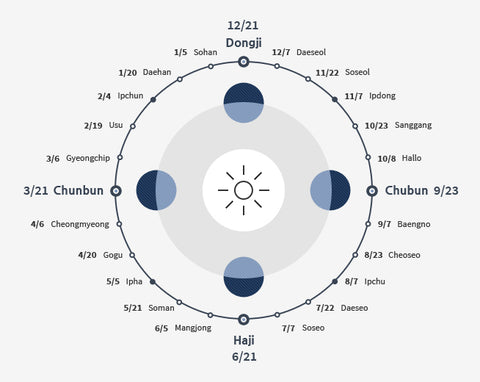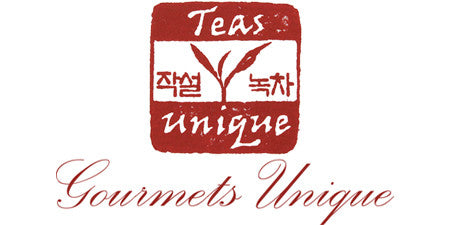Korean Tea Grades
Artisan Korean Jaksul green tea is graded, or categorized, based on the date of harvest and the maturity of buds or leaves plucked. The four traditional Korean Jaksul green tea grades are: Ujeon (First Pluck), Sejak (Second Pluck), Joongjak (Third Pluck) and Daejak (Fourth Pluck). Each grade has particular and unique characteristics, from the subtle, delicate and sweet bouquet of the early spring Ujeon, to the robust, deep and rich flavors and colors of the summer solstice Daejak.
The differences between grades do not reflect superiority or inferiority of quality. Each grade is different, and some tea drinkers will prefer one grade, while others will prefer another. Prices are higher for the early season grades simply because less material is harvested by the farmer for the same amount of time and effort (e.g., small spring buds for Ujeon versus large mature leaves for Daejak). There is naturally less quantity of the earlier grades available for sale, thus they are more rare and consequently more expensive. The best way to have a taste of the different grades, and judge for yourself which you prefer, is to order a harvest specific Tea Sampler Set and try them all!
First, let's understand the seasons relevant to the tea harvest, then we will look at the order of harvest and which buds or leaves are selected depending on the grade.
Seasons
Borrowed from China, the Korean 24-point lunisolar agrarian calendar divides the year (visualized as the elliptical path of the Earth around the Sun) into 24 equal segments, each marked by a significant astronomical or agrarian event. Because the Earth's speed along this elliptic is not constant through each of the 24 segments, the calendar dates of the 24 points vary slightly from year to year.
These 24 points, and their generally corresponding dates, are illustrated in the following graphic.

For the tea harvest, we are only concerned with the late spring and early summer points on the calendar, as shown in the table below, beginning with Gogu and ending with Haji.
| Season Name | English Translation | Date | Chinese | Korean |
| Gogu | Grain rain (first spring rain for farmers) | April 20 or 21 | 穀雨 | 곡우 |
| Ipha | Beginning of the summer season | May 5 or 6 | 立夏 | 입하 |
| Soman | Grain full (grains are plump) | May 21 or 22 | 小滿 | 소만 |
| Mangjong | Grain in ear (awns are growing) | June 5 or 6 | 芒種 | 망종 |
| Haji | Summer solstice (longest day of the year) | June 21 or 22 | 夏至 | 하지 |
Now, how does this relate to tea grading? The harvest dates for each grade are determined by their corresponding points on the calendar, as explained below.
Grades
Each grade has a relatively fixed harvest window and a particular material harvested, either buds or leaves, as illustrated in the following table. Click on the grade name to see the corresponding Teas Unique offerings.
| Grade Name | English Translation | Dates | Harvest | Leaves |
| Ujeon | Before the first spring rain | Before Gogu (April 20) | First Pluck |
 Bud only Bud only |
| Sejak | Sparrow's small beak | After Gogu (April 20) | Second Pluck |
 Bud and a leaf |
| Joongjak | Sparrow's medium beak | Around Soman (May 20) | Third Pluck |
 Young leaves |
| Daejak | Sparrow's large beak | Around Haji (June 21) | Fourth Pluck |
 Mature leaves |
Learn More
To learn more about Korean green tea, be sure to visit our pages About Korean Tea, the History of Korean Tea and the Tea Growing Regions of Korea.
